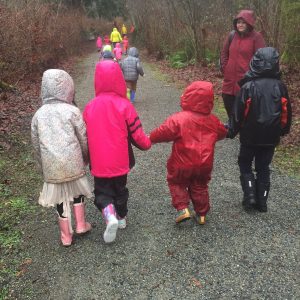Those of you who have attended my Science Through and Inquiry Lens Series (and even those who haven’t)…materials including draft “4 pagers” (topic summaries with lots of teaching suggestions and links) are now posted on line. Please take a look and give me some feedback on what you think and suggestions for what to add. Find it under the workshop tab above or a quicklink here.
 Get Outside!
Get Outside!
As spring comes, more and more of us want to get outside. I’ve put together a list of PLANTS and ANIMALS to KNOW IN BURNABY …can you and your students find them all? Some dedicated Burnaby teachers who are members of the Environmental Educators PSA have put together a blog about Place Based Learning. You will find a lot of tips, tricks and ideas to getting outside.
Drop me an e-mail at Donna.Morgan@burnabyschools.ca if you want some advice, resources or a trained biologist (me) to come outside with you.
